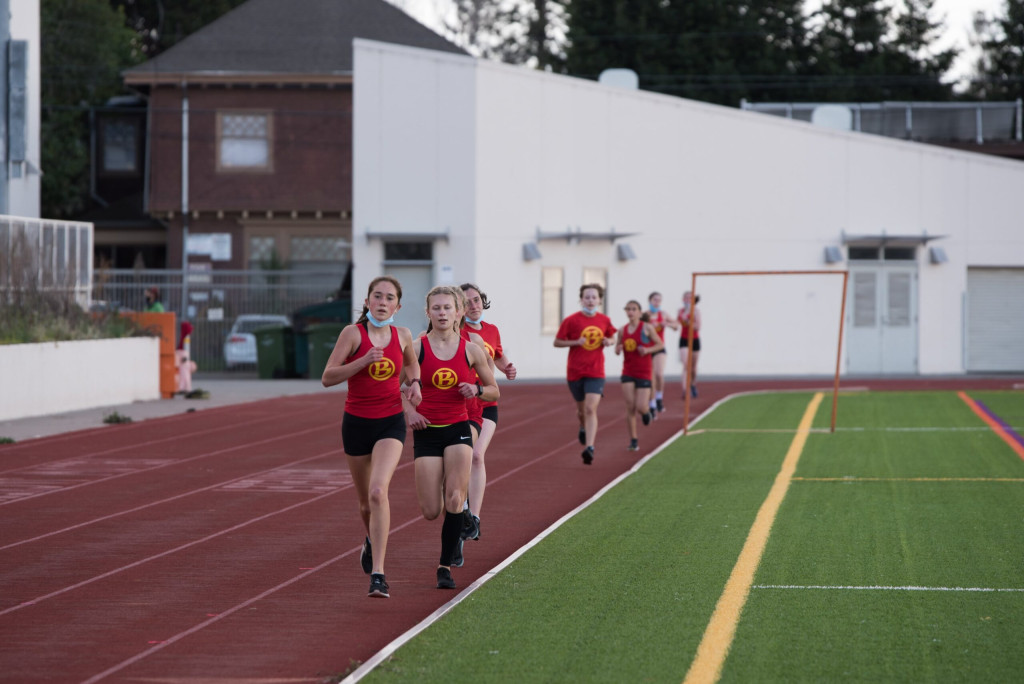The COVID-19 pandemic, needless to say, has had a large impact on sporting events at Berkeley High School (BHS). Fortunately, sports teams are slowly progressing into competition, one example of this being the BHS track and cross country team. Starting off the season strong, the track team had their first in-person meet on Saturday, March 6, against Alameda High School, and brought home the first win of the season. The following Wednesday, March 10, the team secured their second win against San Leandro. While the transition into low-risk competitions and meets has been gradual, these developments have made the season look much more promising for athletes.
As a non-contact sport, the potential exposure to and transmission of the coronavirus doesn’t pose as much of a threat in track and cross country. However, modifications have been made to the aspects of the sport that do present safety concerns. In addition to a mask mandate, basic procedures such as temperature checks and hand sanitizer are required at the beginning of practices and meets. Bobby Pope, the sprint coordinator for the BHS track team, outlined the ways in which meets have been altered to work within these parameters. “In the past, they were designed around having folks from different schools compete in the same heat and now we run against our own team in the heat and they run with their team,” said Pope. This way, contact can be further prevented between opposing schools while the competition can carry on.
In order to adhere to COVID-19 guidelines and restrictions, meets are now being held on a much smaller scale. What once were lively competitions and large invitationals, hosting anywhere from two to twenty teams, have now been reduced to meets strictly between two schools. Isadora De Liberty, a senior in Berkeley International High School (BIHS), has been a Yellowjacket runner on the girls BHS track team since their freshman year. De Liberty expressed that creative solutions had to be formulated to account for the lack of technology that is normally available at meets during a regular season.“We don’t have all of the technology to time everyone perfectly so we have a very old school method now of having a bunch of coaches responsible for each lane with a stopwatch,” said De Liberty.

Each runner is designated two family members who can attend the meet as spectators, which has left the stands looking much more vacant, devoid of the normal bustle of enthusiasm from the crowds. Rabiah Kabir, a senior in Academic Choice (AC), has been a part of the BHS girls varsity track team since her freshman year. Kabir noted, “[The meet] was about the same length but there were not as many reps of the heats and you didn’t have as much time to recover.”
Returning to competition with a limited training schedule after being out of practice for almost a year has been a difficult adjustment for track and cross country athletes. Tali Bojdak-Yates, a distance runner on the track and cross country team and senior in AC, found that preparing for meets was slightly more challenging with their modified schedule. “Before the pandemic we would train six days a week and we could do pack runs where ten people are running together, and now we practice three days a week,” said Bodjak-Yates.
Nevertheless, the opportunity for athletes to return to meets is exciting in itself and will hopefully help get them back on track to get their desired times and return to prime physical condition. Pope noted, “We are one of the first sports teams to get back into competition and we are back with full Yellowjacket pride.”





